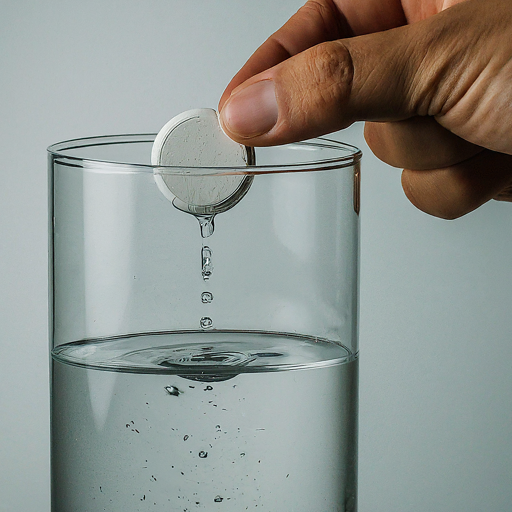What is every vessel operator required to do? Keeping a safe and watchful eye out for radio transmissions or navigational hazards and other boats is essential to the success of any fishing operation. Maintaining an announced speed limit will help you avoid accidents with vessels that may be closer than expected when there’s no wind forecast for their area – this includes boaters as well. Every vessel operator is required to be a safe and reasonable person in the water. For example, he must respect other boaters’ rights of way over certain areas of land or bodies of water they may occupy at any given time (i.e., swimming pools). He also needs to show care when passing by swimmers who might not want him coming too close due to your boat’s wake. Know: What is every vessel operator required to do?
He must also pay attention to the safety of his surroundings and operate responsibly. If you are unsure what to do, here are some guidelines for you:
You should be a special boater.
The Coast Guard reports that three-fourths of accidents involve factors within the operator’s control. Boat passengers rely on proficiency, conduct, and knowledge to ensure their safety when traveling by water with other vessels.
As we all know, not every trip goes as planned, but there are some basic steps you can take to protect yourself from any potential dangers which may arise during your journey. The Coast Guard warns all boaters to wear life jackets and stay attentive at the wheel. They also challenge those who enjoy spending time on the waters, as it can be very entertaining but dangerous if not done responsibly.
The waterways are a shared resource for all of us to enjoy. Be considerate and don’t dock on private property unless you have permission from the owner or legal authority figure in charge because it can be dangerous if not done correctly. Do you know what is every vessel operator required to do?
Remember to stay under the speed limit and also follow the posted signs. If in doubt, you can also consult any boater for guidance!
Maintain a lookout
The lookout is the eyes of a boat. They are responsible for watching out into threatening areas and reporting any changes in location or behavior that may affect their vessel’s safety, ensuring its operators have what they need at all times to get it done safely!
A proper watch must always be maintained – whether you’re operating engine A or B on board your vessel.
The ability to provide for yourself in case of emergency or disaster is one crucial element that makes this type of shelter so invaluable. It’s not just about having food storage facilities, but also things like toilet paper and other necessities. To stay safe while operating a powerboat, you must be aware of your surroundings and other vehicles. It is important for operators to look out into oncoming traffic and pay attention to the background lights to avoid any potential collisions with vessels or hazardous objects like swimming areas. What is every vessel operator required to do? is the key-point to discuss now.
The ATSB has found that, in 41% of collisions reviewed so far this year alone, a common cause was a failure to maintain a proper lookout. This means these accidents could be prevented by ensuring all vessel operators keep an eye out for each other and prevent possible danger ahead. The use of AIS: Automatic identification systems and Radar is significant for perfect decision-making. As a rule, operators should make sure that their crews are well trained as well as the equipment they’re using; this will help avoid collisions when possible by ensuring all Available means have been exhausted before two vessels come into contact with one another.
Beware of your surroundings
Boat operators must always remain alert to ensure the safety and comfort of those on board. Boat operators should use their senses, including sight, sound, or smell, in order to keep themselves aware as they navigate through different environments with Lotsa Boating Safety Tips.
Pay attention to the rules of safety when operating a boat. You might feel comfortable in your own skin, but there are still things that need followed and it’s important not only for yourself but also for other people on board as well. Boating is a great way to get out on the water, but it’s essential to avoid accidents. Moreover, you should be alert and follow all of these rules exactly as they’re written in order to protect yourself or others around you from harm.
Beware of weather
The initial safe boating in safe boating is knowing what weather patterns exist. Storms typically come from the west or southwest, so if you see high wind gusts happening towards your destination, it may be best to cut short of a trip and avoid running aground on unseen rocks. At the same time, visibility could be more optimal due to dense fog that can also reduce sight-see troubles with navigation!
If you must inspect cargo on a vessel, then make sure that everyone knows the reason for your actions. Hustle aboard the ship and get acquainted with safety regulations before starting work. If you’re unaware of these rules, there couldbe fines or other penalties- so read up!
- Any hazards must be avoided.
- Without supervision or permission, you must not enter to any area that does not allow the public to enter.
- You should beware of hazards or dangers that might occur during your trip and proper training, and receive guidance from licensed personnel where required.
Staff on vessels and ships should always consider risk assessments:
1.1 Equipment of Suitable Safety
The importance of safety equipment cannot be overstated. Which includes:
- Visibility clothing;
- Non-slip shoes
- life jackets
- gloves;
- ‘dry suits’
- overalls;
- anti-static shoes
- Safety helmets
- Intrinsically safe
- Multi-gas alarm
- Radio line intrinsically safe (IS);
- Lifeline, location line, and Safety harness
- MARS: Manual and automatic resuscitation systems
Access to vessels
What is every vessel operator required to do?The master of a vessel should provide safe means for anyone who wants to board the ship. Moreover, it includes customs officers, and it applies regardless if they’re on land or at sea.
Vessel access for ships will be provided by way of gangways, but these must first receive securing. Nets should also exist at various points where the bridge crosses water to prevent accidents and deaths during construction time.
The best way to board a boat is with an experienced pilot and co-pilot. If you don’t know what you are doing, it can be dangerous! Make sure that the area has been checked for ice or other slippery surfaces before heading out on their own; also, remember safety shoes will help, but they’re not perfect so keep those eyes peeled in dark places too (or wear bright colors).
2.1 Boarding at a quay
We recommend that you use the provided gangway or ladder when boarding a vessel at your embarkation point. Make sure to verify if they are prohibited before using them so as not to get into any trouble.
- The ladder or Gangway has been adequately rigged and secured.
- The extension gives you more safety, and it’s at an angle where no sharp objects are within reach.
- The safety net is in place to protect you from falling into the water.
- Boarding a ferry that maybe roll off/on, you must use the gangway if you want to access it.
- It is important to be aware of the risks of accidents when boarding a boat with low ceilings. You should fall or slip if you jump onto its decks, so always check first before jumping aboard.
When you arrive at your destination, be sure to ask the captain about any changes in tide or access that may have occurred since departure. It is also possible for there to be a challenge reaching whatever it is we’re going towards as well; we might need an extra pair of hands.
2.2 Boarding vessel
Boarding a vessel can be dangerous and if possible, avoid it. If the other boat is moving, you should not board because there could potentially only exceptions for when both ships have lower freeboards.
-The exception to this rule is when you need a rope ladder for your outboard vessel, which should only be used if taught how to use safely. If not – don’t attempt climbing.
In bad weather, it is essential to wear a life jacket at all times.
2.3 Use ladders
The best way to gain access is not with a portable ladder. Sturdily built and maintained equipment will serve you better in this situation, so make sure it’s something like that before using it. If you take the given safety precautions, then it would probably:
- To avoid slipping and falling, ensure the ladder is tied off at both ends.
- Use both hands to ensure safety and prevent injury when reaching for high places. Keep at least 1 meter between yourself and the object you’re trying to reach so that if something goes wrong, it won’t be too close for comfort.
- There are many tools that can be attached to a belt and kept in an easily accessible bag. This allows you not only to have all your equipment with ease but also to keep it away from dirt or other contaminates which would damage its quality if left on-site immediately after use.
- When climbing the ladder, always face it when mounting or descending.
- Rung by rung, take another step.
The best way to avoid danger is by wearing safety clothing like a stiff hat or life jacket. It’s important that you do not wear any loose-fitting garments when climbing because they could get caught on the rungs and cause injury.
2.4 Personnel carriers
Mobile offshore drilling machines are often transported by personnel carriers, which can be quite dangerous. This should only really be attempted if one has been trained for the task and shouldn’t try it at home. The oil industry is one of the most dangerous industries to work in, but it doesn’t have to be scary. The best way for you and your co-workers alike if they want some tips on how not to die from an accident while working or traveling around these units should read this article:
- You will have peace of mind knowing that the transfer process is safe.
- It is important to always wear the appropriate safety equipment, like a life jacket. This will keep you safe and protected from any danger that may arise during your time on the water.
- When you’re ready, ensure a rescue boat and standby vessel are available.
- Following all instructions overseeing your transfer will ensure a safe and smooth process.
This boarding type should not be done if the weather is bad:
Board work
The insects in a vessel are resilient, and you can find them anywhere. It is dangerous to touch soiled items because rats could bite you.
Equipment of ship: The best way to ensure your family’s safety onboard is by consulting a competent officer before beginning any inspections. The safety of passengers and crew is always our top priority. Any interruption with equipment can cause a vessel to be considered less safe, which would then compromise its seaworthiness – this would lead to criminal charges for those who commit these crimes against maritime transportation.
Passenger areas and Crew quarters: Always be aware of sharp objects hiding in the upholstery when searching these areas. You must remove any safety equipment (e,g., life-jackets) that you have moved and bring it with you into another area so it’s not lost forever- even if only for a few minutes.
Storage And Lockers Compartments: Be careful with hazardous materials and equipment. If you need more clarification about their contents, ask for help from workers nearby.
Toilets: Where there are chemicals and disinfectants, it’s always a good idea to wear gloves. When handling any toilet seat or handle without protection, your hands may become irritated from the harshness in some cases, which can lead to discomfort and infection. After you’ve finished searching and washing your hands immediately afterward, it will help prevent any future infections from happening.
Galleys: When handling cooking equipment, always be mindful of how hot it can get. Broken glass is an ever-present danger in the trash bags or bins that are usually located near your sink when you have a galley lift installed on board; however, these lifts should never be used for access purposes because they’re very dangerous.
When you enter a hold, take extra care. You should always ask permission before going in and wear protective clothing like gloves or boots to protect against cargo shifting during transit- especially if it’s rough!
Be sure to follow the instructions provided by your manufacturer on how best to install a hatch cover.
Do…
- To ensure that your rubber packaging is durable and effective, it’s important to resolve any issues before you renew the material. Otherwise, new reels will only be able to make good on their promise of lasting for a while.
- Make sure that your cleats and chains are adjusted properly for good foot movement.
- When not in use, hatch covers and doors should be closed tightly to prevent access by young children.
- Make sure that the coaming tops are always clean and free from any obstruction, as well as draining channels in good condition.
- When you load your bulk cargo, be sure to open all hatch covers.
- You should keep clean the hydraulic system oil.
- Beware of ongoing equipment maintenance.
- Make sure that you can’t start the system or equipment.
- When people are in the hold, be careful that access hatches aren’t locked.
- In order to avoid any accidents, always make sure that you lock all hatch covers before turning off the power.
- Check your wires for any signs of wear or damage on a regular basis, so they don’t snap. Use grease to prevent this from happening.
Don’t…
- The rubber packing surfaces can be greased or painted with various paints and glues, depending on your need.
- If you want to avoid any possible leaks, you can remove rubber ball valves from your drain valve before cleaning.
- The side panels will form grooves in the coaming tops.
- Make sure you use the right type and amount of oil for your vehicle’s hydraulic system.
- Remember cleats while going to sea.
- Side-rolling covers are often used to carry cargo or loads. They should be opened and closed accordingly so that nothing falls off while you’re driving down the road.
- Maintain cleat tension at all times.






















